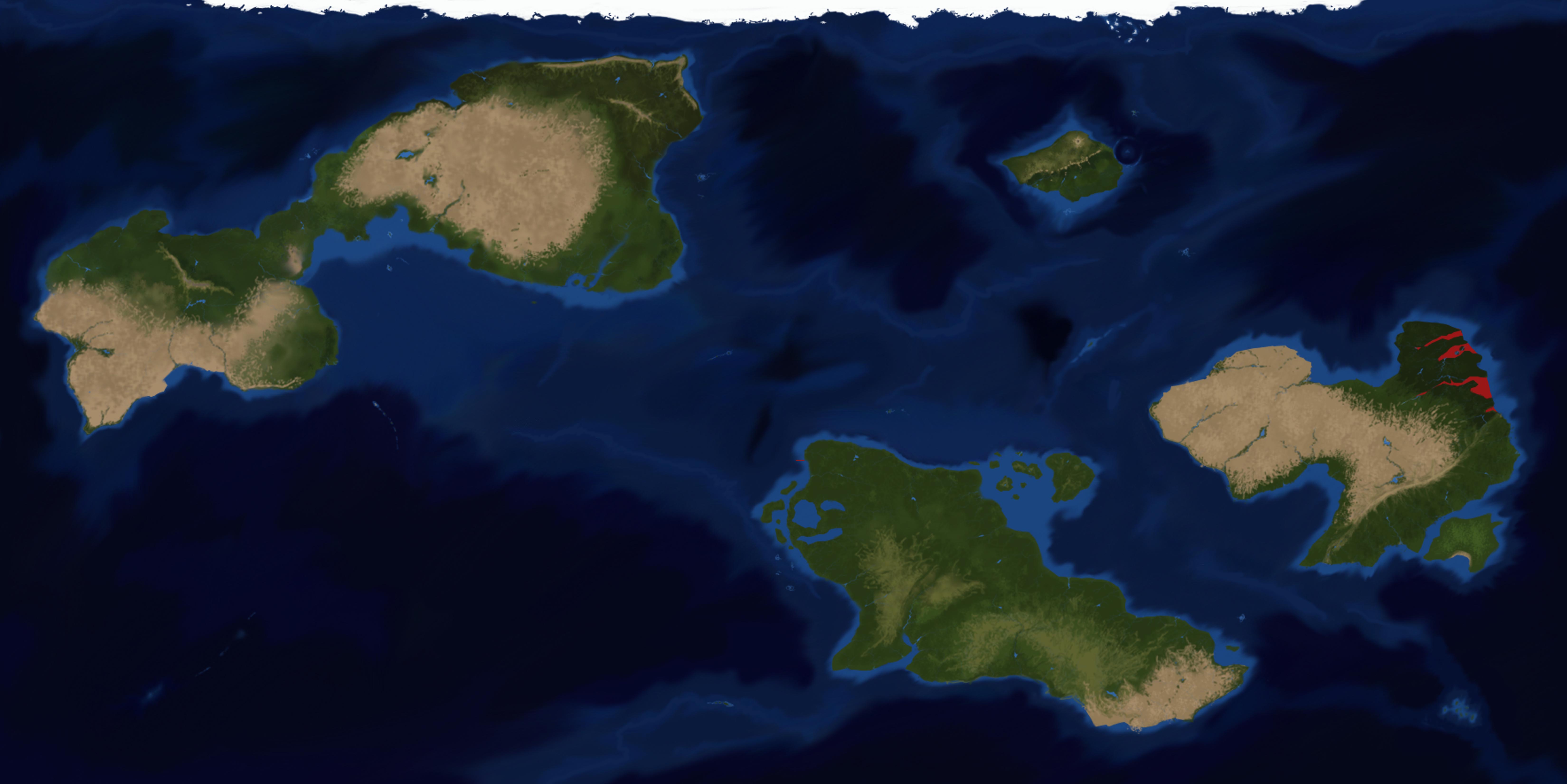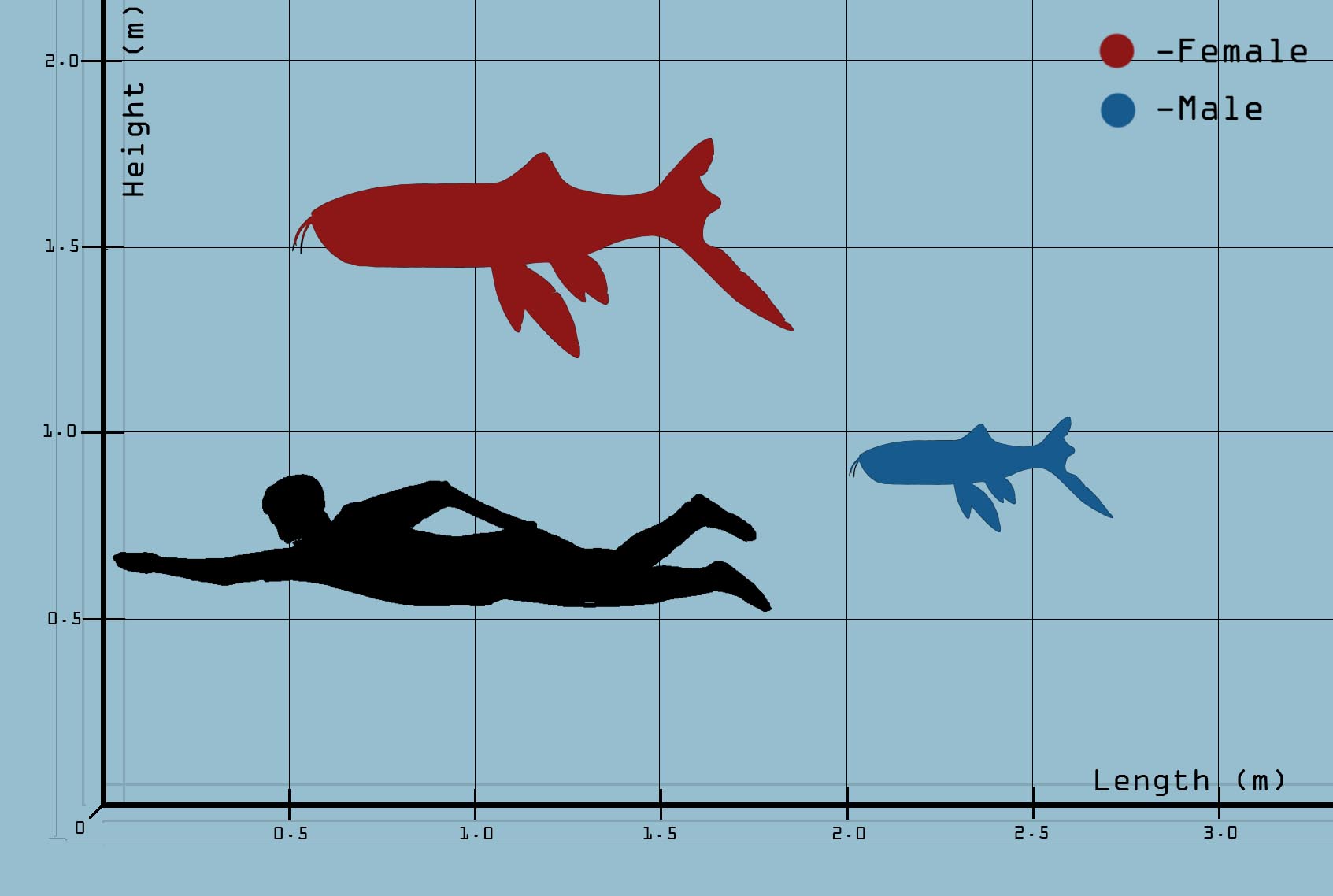Grinning Pumpkinfish
Xenosteoglossum cucurbitachromis is a medium sized river dweller of the Najetee’s marshlands.
While many other members of its family live in the seas or in stagnant swamps, X. cucurbitachromis prefers to hunt in active rivers, especially around rapids and the base of waterfalls.
X. cucurbitachromis has a powerful bite able to break bones and armor with ease.
The three barbs on the head are used by the animal to sense other creatures swimming nearby even in murky waters making this animal an able ambush hunter.
The genus name Xenosteoglossum is due by the Arowana-like (Osteoglossum bicirrhosum) shape of the creature while its species name was given by marine biologist Jonathan Constable after finding a completely orange specimen in 2457.
As of 2576 this fish was declared vulnerable and thus regolamentations had to be taken for the conservation of this animal.
Basic Information
Anatomy
- Compacted head with mostly absorbed cranial armor; powerful jaw muscolature giving the animal a crushing bite; few, large and thick teeth.
- Three fleshy barbs originating from the frontal section of the dentary.
- Body elongated; subtriangular Dorsal fin on the second half of the back.
- Anal I overdeveloped and elongated, Anal II more rounded.
- Gill tail terminating in a high ridged Gill fan.
- Upper caudal tail atrophied; Lower caudal overdeveloped.
Genetics and Reproduction
Every year, during the mating season, all the populations of Xenosteoglossum cucurbitachromis will migrate out of the Fjords and into the open sea where they will congregate.
Males and female alike will select a mate according to several selection factors; beauty standards in males include a bright red throat and distinct markings; in females the color of the body and markings.
Male and female will then take part in elaborate dances, speed bursting one against the other, stopping right before hitting ht epartner's face repeatedly.
Once the mating dances come to an end, the couple will move back to the Fjord's mouth, in the Deep plains zone, where they'll find a good spot to nest together.
Mating takes up to two hour to finish and the female will lay the aggs two days later; the two to four hundred eggs are laid in hidden spots under large leaves or in hollow tree trunks.
The couple will guard the eggs for the first three days of incubation before leaving the nest ang going back to their own territories.
The egs will hatch twenty days later; the spawns will migrate inside the Fjords right after hatching.
Growth Rate & Stages
Ontogenesis marked in the species.
Young members will have equally developed caudal fins at birth, the head will be slightly longer and the cranial armor more developed than in the adults.
Loss of the natal aculeus at one month of age.
Ecology and Habitats
These animals live most of their lives in the murky waters of the low to medium depth zones of Najeete's Marshes, going out in the open sea and deep plains during the mating season.
They prefer to live in streams with high currents or near the bases of waterfalls, where they can better ambush prey.
Dietary Needs and Habits
Xenosteoglossum cucurbitachromis is an omnivorous species; basing most of its diet on smaller amphibians and burrowing animas; they eat also floating fruits and seeds going downstream near their home.
Biological Cycle
Xenosteoglossum cucurbitachromis will reach sexual fertility two years after birth, when they will migrate for the first time outside the Fjords.
Sexual sterility for the species comes at age 10, elderly specimens won't migrate.
Due to the climate and available resources all year long, this animal is periannial with no periods of reduced activity.
Additional Information
Social Structure
Social animal living in small groups outside of the mating season.
They live in small groups from ten to twenty specimen large; they will occasionally interact with one another but will communicate throgh electric currents most of the time.
During the mating season they will congregate in huge groups of thousends of specimens to mate.
Uses, Products & Exploitation
Once used by local populations for food, they are now prohibited to consume after overfishing brought them down to a Vulnerable status.
They were once fished when they migrated out of the Fjords during mating season, when it was easiest to catch them.
Perception and Sensory Capabilities
Excellent sight and echolocatory capabilities.
Symbiotic and Parasitic organisms
Affected by several parasitic species, from intraocular worms to Segmented skin-eaters.
Not affected by Intestinal Tube Worms , a prey of this animal.
Scientific Name
Eoichthyia; Tartarosomnia; Scutocephalidae; Calvatopinnoidea; Caligobelidae; Xenosteoglossidae ; Xenosteoglossum; X. cucurbitachromis
Lifespan
12 years
Conservation Status
VULNERABLE: Some measures underway for this animal's protection.
Population trend: DECLINE
Average Weight
2 to 20 kg
Body Tint, Colouring and Marking
Yellow to orange body tint with Red throat and darker markings and stripes along the body and tail.
Remove these ads. Join the Worldbuilders Guild












Comments